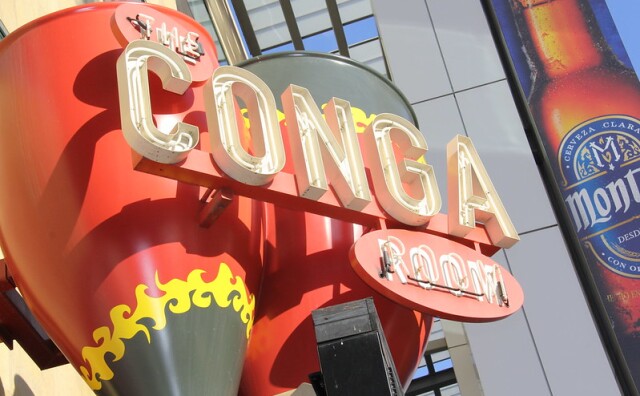When A Lowrider Isn't Just A Lowrider. New Exhibit Explores An LA Tradition And Its Deeper Meaning

To stand amid the sleek vehicles that comprise the new exhibit “Best in Low: Icons of the Street and Show” at the Petersen Automotive Museum is to be immersed in eye-popping color, crazy detail, devoted craftsmanship, and proud individuality. But there’s more to it than that.
“It's about family, it's about culture, it's about expression,” said Bryan Stevens, the Petersen’s director of exhibitions and the show’s main curator, who worked with individual owners and families to bring the lowrider collection together.
“Each of these cars has an enormous amount of history behind it,” Stevens said. “There's so many stories that go with each one. It really is incomparable elsewhere in automotive culture.”
Show opens this Sunday
The show, which opens to the public Sunday, is billed as the biggest showcase of lowriders in the museum’s history. It features 31 cars plus a handful of motorcycles and bicycles, all of them lovingly crafted works of art.
-
Lucha VaVoom is back, chocolate tasting and more
-
Beetle attacks are on the rise
-
For Memorial Day travelers headed home to SoCal
Many are from around the Southwest; two came from Japan.
“We wanted to present the fact that this is now a global phenomenon,” Stevens said. “It has grown in the last few decades to be something found literally everywhere in the world except, I suppose, Antarctica.”
An L.A. phenomenon
That said, the show, like the decades-old lowriding tradition, has an L.A. heart.

“Lowriding culture really did originate here,” Stevens said. “It’s an L.A. phenomenon, and it remains largely an L.A. phenomenon today. There are lowrider car shows on any given weekend somewhere in Los Angeles. A lot of the biggest and best-known shows and gatherings are all here.”
Lowriders are, of course, synonymous with L.A. The tradition dates back to the post-World War II era, when young Chicanos began customizing older, affordable cars that eventually became rolling metal canvases.
Cruising strips like Whittier Boulevard became showcases as lowrider cars became an increasingly innovative art form that featured not only elaborate paint jobs, but customized interiors and hydraulics.
How the tradition spread

Over time, the tradition spread beyond Chicano culture. Tina Blankenship-Early, whose 1966 Chevrolet Caprice “Game Killa” is featured in the exhibit, grew up in Watts, inspired by the mostly Black lowrider owners on her street.
“Ever since I was a little girl, I just wanted to low ride,” said Blankenship-Early, who started out working on car stereos and was eventually invited to join the Super Naturals car club, which she describes as “multicultural.”
What she loves most about lowriding: “The ride is like no other ride in a car,” Blankenship-Early said. “The ride of the car, the gatherings, like where it is just this big car show, everyone listening to music, taking pictures with each other. There is no color line in lowriding, it’s a party and a big car show for us.”

Exhibit highlights
Among the highlights of the exhibit:
- The famed “Gypsy Rose,” (see the lead photo above) a pink 1964 Chevrolet Impala festooned with painted flowers that appeared in the opening credit of the 1970s television comedy Chico and the Man
- Two three-time Lowrider magazine “Lowrider of the Year” award winners: The mind-blowing gold-toned 1958 Chevrolet Impala convertible dubbed “Final Score” and the sparkling blue, family-themed 1957 Chevrolet Bel Air known as “Double Trouble.”
- The sleek, glowing green 1958 Chevrolet Impala known as “Dead Presidents.”
- The venerated “Sphinx,” a gold and violet 1954 Chevrolet 210 Sedan from Nagoya, Japan that has become an emblem of Japanese lowrider culture.
Each car is labeled with the name of its owner and corresponding car club. Some were customized by the owners themselves, and/or with the help of specialized craftsmen who worked on everything from paint jobs to engraved chrome.
The exhibit is arranged in a way that certain cars’ standout features are showcased — for example, interiors or hydraulics.
Sandy Avila’s 1984 Oldsmobile Cutlass Supreme “Simply Beautiful” is highlighted for its sophisticated hydraulic system that allows it to stand on three wheels. She said that when her car was chosen, with its sleek but decidedly neutral paint job, she was floored.
“Even when they were taking it in, I was like ‘Oh my gosh, those cars in here are so fancy!’ It is super cool, and I am super honored to be a part of it,” said Avila, whose Pasadena-based Lady Lowrider Club was the subject of a 2022 LAist story.
Some of the cars are still driven by their owners, said museum curator Stevens. And while they are museum pieces for now, “we don't own any of these lowriders,” he said. “Every single one is still owned by either the person who commissioned its creation, or by the builder themselves.”
Stevens said the exhibit is expected to remain at the Petersen for the next 13 months.
How to visit
Location: Petersen Automotive Museum, 6060 Wilshire Blvd. (at Fairfax) in Los Angeles
Hours: 10 a.m. to 5 p.m. daily
Admission: $21 for adults, $19 for seniors (62+), $13 for youth (12-17) and $12 for children ages 4 to 11.
Exhibit dates: Opens Sunday, May 12th and is scheduled to run through April 2025
-
A new trend in travel focuses on disconnecting from modern life and reconnecting with oneself in nature. It's called a "quiet vacation."
-
Samy Kamienowicz, the man who founded the retail camera stores and became a fixture for the city's creative community, has died. Los Angeles pays tribute.
-
The music will live on through the nonprofit Conga Kids.
-
Known for its elaborate light displays, this year, the neighborhood is expecting a bigger crowd tied to the release of “Candy Cane Lane” on Amazon Prime Video.
-
Dancers at Star Garden demanded better working conditions — including protection from aggressive guests. Up next: An actual contract.
-
The Alliance of Motion Picture and Television Producers rejected the SAG-AFTRA union's request for a separate type of residual payment that actors would get once their programs hit streaming services.








